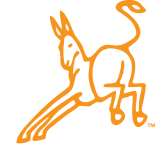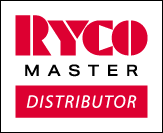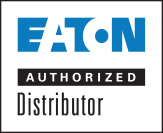How to Avoid Moisture Damage in Hydraulic Hoses on the Texas Gulf Coast
Moisture can cause corrosion, weaken the hose structure, and eventually lead to costly system failures. Here are some of the risks of moisture damage and some actionable steps to protect your hydraulic hoses in the Gulf Coast area.
Why Moisture Is a Threat to Hydraulic Hoses in the Gulf Coast Region
Water enters your hydraulic system through cracks, weak connections, humidity, storm damage, and other factors, leading to various issues. Some notable issues include
- Corrosion of Metal Components.
Moisture causes rust and corrosion on metal parts like fittings and reinforcements, weakening the hose structure and leading to failures.
- Degradation of Hose Material. Moisture can work its way into cracks and scratches on the hoses, causing swelling, softening, or widening cracks. These issues can lead to leaks or ruptures.
- Water Contamination in Hydraulic Fluid. Moisture entering the system can contaminate hydraulic fluid, reduce lubrication, create rust inside the components, and cause premature wear of critical parts.
- Freezing Risk. In cooler conditions, moisture inside hoses can freeze, leading to cracks and clogs within the hose system.
- Microbial Contamination. Warm, moist conditions can promote bacterial and fungal growth inside hoses, leading to biofilms that clog systems and degrade components.
Signs of Moisture in Hydraulic Hoses
Detecting moisture damage early can save your business from costly repairs or downtime. Look for these common signs of moisture-related issues during visual inspections.
- Cloudy or Milky Hydraulic Fluid. When water is present in your hydraulic fluid, it can appear cloudy, milky, or discolored.
- Corrosion on Metal Parts. Look for rust or corrosion on metal fittings, couplings, or any exposed hydraulic system parts. This can indicate that moisture has entered the system.
- Deformations in the Hose. Moisture can cause the inner lining of hydraulic hoses to swell or soften, leading to bulging, deformation, or changes in hose flexibility. If these deformations freeze in cold weather, they can further weaken the hose and cause it to burst.
- Unusual Operating Temperature. Excessive moisture in the hydraulic fluid can reduce its heat transfer capabilities, causing higher temperatures, changes in viscosity, and other issues.
- Foaming or Bubbles in Fluid Reservoir. When water and oil flow through the system together, they emulsify (break into tiny droplets). If this occurs, it will look like foam or visible bubbles in the fluid reservoir.
Preventing Moisture Damage in Hydraulic Hose Systems
Premature wear and moisture damage can be prevented without expensive system changes. Here are a few practical things you can do to extend the life of your hydraulic hoses.
Store Equipment Properly
Keep your hydraulic hoses and equipment covered or in dry, sheltered environments to reduce moisture exposure. If you store your inventory outside, consider using protective coverings like tarps or wraps.
If your area is prone to flooding, make sure your inventory is stored above ground level and avoid places where water could pool around them.
Regularly Inspect Hoses and Fittings
Check hoses for cracking, rust, or leaks after storms or excessive seasonal temperature changes. Make sure to inspect the
fittings and connections in the process.
Install a Hydroscopic Breather
Water can enter hydraulic systems through the reservoir breather during fluid changes. Switching a standard breather cap to a hygroscopic breather prevents this by filtering out particles and absorbing moisture from the air.
Check For Proper Hose Installation
Improper installation leaves your hydraulic hoses vulnerable to moisture damage. Be sure that your hoses are routed correctly and that fittings are securely tightened. If you need help with the proper parts or installation techniques, consult an expert who can help optimize your system.
Action Supply Can Help You Optimize Your Hydraulic Systems
Moisture damage is just one of many issues that can affect your hydraulic hose systems. We will recommend the right oil to handle seasonal temperature fluctuations, the right fittings to avoid leaks and issues, and even provide inventory management services to ensure you have the parts you need. Contact us today for your custom solutions this season.





